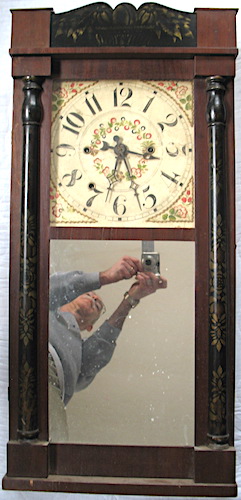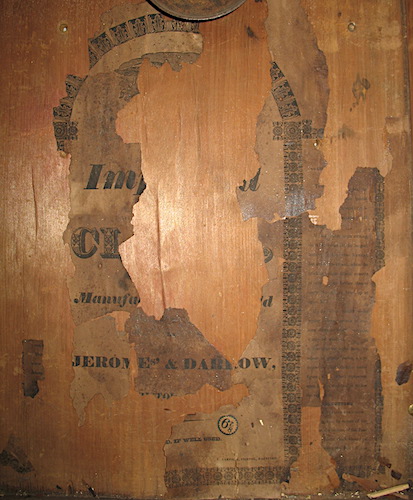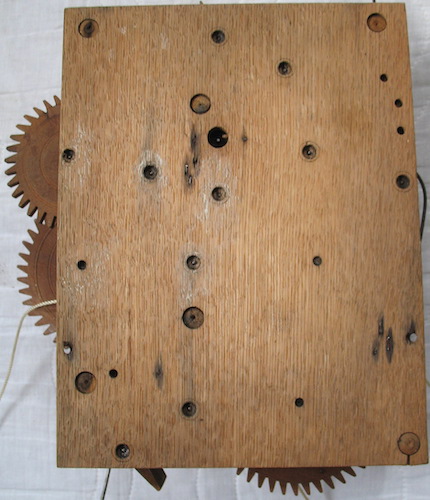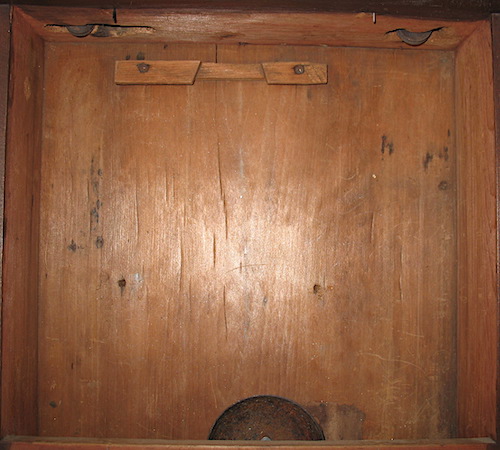30-hr Jeromes & Darrow wood works clocks are not uncommon. Ones with a groaner movement with between-the-plates alarm, on the other hand, are relatively scarce. The Jeromes & Darrow firm was in business from 1828-1834, initially using groaner movements supplied by Chauncey Boardman. Shortly thereafter (still in 1828), they began using movements of their own manufacture. These movements, which were likely designed by Noble Jerome, are known as “thin movements”, because they are not as deep (between the plates) as Terry-style movements or Boardman groaners. After no more than a year, Jeromes & Darrow developed their own version of the Terry-style movement (Roberts & Taylor date this development to 1828-1829), which Jerome firms continued to use (with slight variations) until the late 1830s. The reference to the thin movements and the Terry-style movements is merely to establish that Jeromes & Darrow probably only used groaners during their first year in business. One thing to keep in mind when considering the implications of a maker switching between movements is the change in case design required. A groaner case (5 7/8”, measured at the base) is deeper than a case for a Terry-style movement (4 7/8”), which is in turn deeper than a “thin movement” case (4 ½”). Measured at the side board of the case, the dimensions are 3”, 3 7/8”, and 4 1/8”, respectively. From a production standpoint, manufacturing the same style of case (bronzed looking glass, for example) for clocks with different movements at the same time would have been inefficient.
Poorly preserved label, which fortunately has enough left to identify the maker as Jeromes & Darrow. Many of the fragments were resting in the bottom of the case and have been repositioned (though not glued) to their proper location on the backboard.
Front view of the 30-hr groaner movement, made by Chauncey Boardman, with the addition of a between-the-plates alarm. In order to accommodate the alarm, the plates have been extended downwards. As seen in the photo of the entire clock, the alarm was set using a hand, as opposed to an alarm disk. According to a 1973 article in the NAWCC Bulletin (Whole No. 167) by Ward Francillon, groaners using the hand to set the alarm are more common than ones with the alarm disk. Whereas the hours strike on a bell on top of the case, the alarm strikes on a bell mounted inside.
Rear view of the groaner movement. The “fly”, which helps control the speed of alarm striking, is peeking out at the lower left.
Normally, groaners are attached to the backboard using wood strips at top and bottom. There is no evidence that this clock ever used a bottom mounting block. Instead, it was secured using a screw through each side of the back plate into the backboard.
This clock was formerly in the collection of Snowden Taylor and was purchased at an auction at the 2018 Eastern States Regional.




